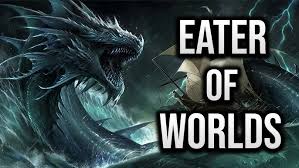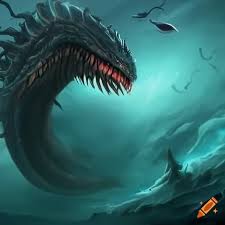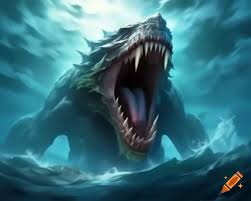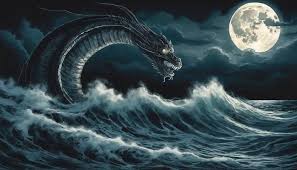Table of Contents
ToggleThe Enigmatic Leviathan is one of the most enduring and fascinating figures in mythology and literature. Often depicted as a colossal sea monster, it has captured human imagination across cultures and centuries. This mythical beast embodies the mysteries and fears of the deep, serving as both a symbol of chaos and a representation of divine power. From ancient texts to modern interpretations, the Leviathan remains an enduring icon of the unknown depths of the sea.
Origins in Ancient Texts Enigmatic Leviathan

The Enigmatic Leviathan origins trace back to ancient religious and mythological texts, particularly within the Abrahamic traditions. In the Hebrew Bible, the Leviathan is mentioned several times, most notably in the Book of Job, Psalms, and Isaiah. It is described as a sea creature of immense size and power, capable of stirring the oceans and challenging even the strongest of beings.
The Book of Job offers the most vivid depiction of the Enigmatic Leviathan , portraying it as an untamable and fearsome creature. It is said to have impenetrable scales, fiery breath, and an unmatched ferocity. This description emphasizes its role as a symbol of divine creation, a testament to the power and majesty of God.
In other ancient traditions, similar sea monsters appear. The Mesopotamian myth of Tiamat, a primordial goddess associated with the sea, shares thematic parallels with the Leviathan. Tiamat is depicted as a chaotic force defeated by the god Marduk, much like the Leviathan’s portrayal as a symbol of chaos subdued by divine power.
Symbolism of the Enigmatic Leviathan
The Enigmatic Leviathan holds deep symbolic significance, representing the duality of creation and destruction. Its association with the sea, a vast and uncontrollable force, underscores its role as a symbol of chaos and the unknown. The ocean, with its uncharted depths and untamed power, serves as a fitting domain for such a creature.
At the same time, the Leviathan also symbolizes divine power and mastery over chaos. In religious contexts, its existence is often framed as a demonstration of God’s sovereignty over all creation, even the most fearsome and uncontrollable aspects of the natural world.
The Enigmatic Leviathan fire-breathing abilities and indomitable strength also lend it a dragon-like quality, further enhancing its image as a creature of both awe and terror. This duality makes the Leviathan a compelling figure, embodying the complex relationship between humanity, nature, and the divine.
Depictions in Literature and Art

The Enigmatic Leviathan has inspired countless works of literature and art throughout history. In medieval Christian art, it was often depicted as a serpent-like creature or a dragon, sometimes associated with hell and sin. These depictions reflected theological interpretations that linked the Leviathan with Satan or the forces of evil.
In literature, the Enigmatic Leviathan appears in various forms, often as a metaphor for immense and overwhelming challenges. The English philosopher Thomas Hobbes famously used the Leviathan as a metaphor for the state in his 1651 work Leviathan, describing it as a powerful and sovereign entity necessary to maintain order.
More recent literary works, such as Herman Melville’s Moby-Dick, draw on the Enigmatic Leviathan myth to explore themes of obsession, nature, and the limits of human understanding. The titular whale in Moby-Dick serves as a modern incarnation of the Leviathan, a formidable and enigmatic force that eludes comprehension and control.
Influence on Modern Culture
The Enigmatic Leviathan continues to influence modern culture, appearing in movies, television, and video games. Its image as a giant sea monster resonates with contemporary audiences, who remain fascinated by the mysteries of the ocean. Films featuring sea monsters, such as Godzilla or The Meg, owe much of their appeal to the Leviathan’s enduring legacy.
In gaming, the Leviathan is often portrayed as a boss or a formidable challenge, emphasizing its role as an ultimate adversary. These interpretations highlight its power and mystery, making it a captivating addition to fictional worlds.
The Leviathan also features prominently in popular mythologies outside its original context. In fantasy genres, it is often reimagined as a primordial beast or a guardian of hidden treasures, reinforcing its association with the unknown and the extraordinary.
Scientific Parallels and Inspirations
While the Enigmatic Leviathan is a mythical creature, its descriptions may have been inspired by real sea creatures. Ancient sailors, encountering whales, giant squids, or other massive marine animals, might have exaggerated their accounts, creating the basis for the Leviathan myth. The mysterious and often terrifying nature of the ocean undoubtedly contributed to these stories.
Modern marine biology has uncovered numerous species that evoke the grandeur and mystery of the Enigmatic Leviathan . Giant squids, capable of reaching lengths over 40 feet, and colossal whales dominate the seas much like the Leviathan of myth. These creatures, while not fire-breathing or dragon-like, embody the awe-inspiring power and vastness of the ocean.
Psychological and Philosophical Interpretations

The Leviathan can also be understood as a psychological and philosophical symbol. Carl Jung, the Swiss psychoanalyst, might have interpreted the Leviathan as an archetype of the collective togelup unconscious, representing humanity’s fears of the unknown and uncontrollable. Its chaotic nature mirrors internal struggles, such as the tension between rationality and primal instincts.
Philosophically, the Leviathan challenges humanity’s relationship with nature and the divine. It serves as a reminder of human limitations in the face of vast and uncontrollable forces. At the same time, its existence in myth reflects humanity’s enduring quest to understand and master the natural world.
The Leviathan in Religion and Spirituality
In religious contexts, the Enigmatic Leviathan often represents the ultimate test of faith and the power of the divine. Its mention in the Hebrew Bible serves to illustrate God’s ability to control even the most fearsome aspects of creation. This theme is echoed in other spiritual traditions, where sea monsters symbolize trials that test the strength and resolve of individuals or communities.
In Christian theology, the Leviathan is sometimes interpreted as a representation of evil or sin, highlighting the struggle between good and evil. However, its presence also reinforces the belief in divine justice and the eventual triumph of order over chaos.
Enduring Fascination with the Leviathan
The Enigmatic Leviathan enduring appeal lies in its ability to evoke both fear and wonder. Its mythical status allows it to transcend cultural and temporal boundaries, adapting to new contexts and interpretations. Whether as a symbol of divine power, a metaphor for human struggles, or an embodiment of the ocean’s mysteries, the Leviathan remains a powerful figure in human imagination.
As humanity continues to explore the depths of the ocean and the mysteries of existence, the Leviathan serves as a reminder of the unknown forces that lie beyond our understanding. Its story is a testament to the enduring power of myth and the human desire to confront and comprehend the extraordinary.
Conclusion
The Enigmatic Leviathan is more than just a mythical sea creature; it is a symbol of chaos, power, and the unknown. Its presence in ancient texts, literature, and modern media reflects humanity’s fascination with the mysteries of the sea and the forces that shape our world. As a figure of awe and terror, the Leviathan challenges us to explore the depths of our fears, dreams, and understanding, ensuring its place as a timeless icon of mythology and imagination.

